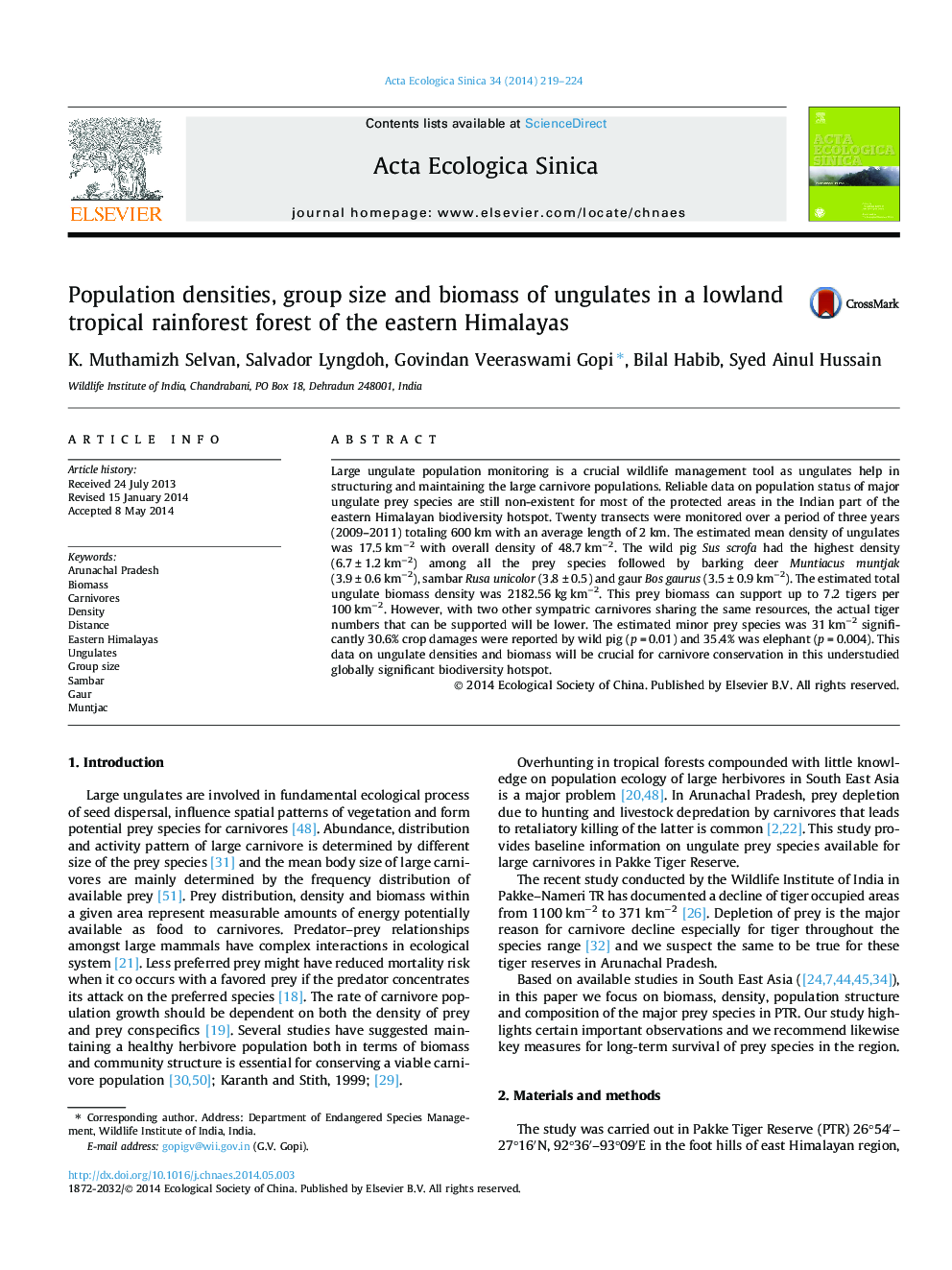| کد مقاله | کد نشریه | سال انتشار | مقاله انگلیسی | نسخه تمام متن |
|---|---|---|---|---|
| 10179842 | 1303938 | 2014 | 6 صفحه PDF | دانلود رایگان |
عنوان انگلیسی مقاله ISI
Population densities, group size and biomass of ungulates in a lowland tropical rainforest forest of the eastern Himalayas
ترجمه فارسی عنوان
تراکم جمعیت، اندازه گروه و زیست توده ی گوسفندان در جنگل های کم ارتفاع جنگل های استوایی در شرق هیمالیا
دانلود مقاله + سفارش ترجمه
دانلود مقاله ISI انگلیسی
رایگان برای ایرانیان
کلمات کلیدی
موضوعات مرتبط
علوم زیستی و بیوفناوری
علوم کشاورزی و بیولوژیک
بوم شناسی، تکامل، رفتار و سامانه شناسی
چکیده انگلیسی
Large ungulate population monitoring is a crucial wildlife management tool as ungulates help in structuring and maintaining the large carnivore populations. Reliable data on population status of major ungulate prey species are still non-existent for most of the protected areas in the Indian part of the eastern Himalayan biodiversity hotspot. Twenty transects were monitored over a period of three years (2009-2011) totaling 600 km with an average length of 2 km. The estimated mean density of ungulates was 17.5 kmâ2 with overall density of 48.7 kmâ2. The wild pig Sus scrofa had the highest density (6.7 ± 1.2 kmâ2) among all the prey species followed by barking deer Muntiacus muntjak (3.9 ± 0.6 kmâ2), sambar Rusa unicolor (3.8 ± 0.5) and gaur Bos gaurus (3.5 ± 0.9 kmâ2). The estimated total ungulate biomass density was 2182.56 kg kmâ2. This prey biomass can support up to 7.2 tigers per 100 kmâ2. However, with two other sympatric carnivores sharing the same resources, the actual tiger numbers that can be supported will be lower. The estimated minor prey species was 31 kmâ2 significantly 30.6% crop damages were reported by wild pig (p = 0.01) and 35.4% was elephant (p = 0.004). This data on ungulate densities and biomass will be crucial for carnivore conservation in this understudied globally significant biodiversity hotspot.
ناشر
Database: Elsevier - ScienceDirect (ساینس دایرکت)
Journal: Acta Ecologica Sinica - Volume 34, Issue 4, August 2014, Pages 219-224
Journal: Acta Ecologica Sinica - Volume 34, Issue 4, August 2014, Pages 219-224
نویسندگان
K. Muthamizh Selvan, Salvador Lyngdoh, Govindan Veeraswami Gopi, Bilal Habib, Syed Ainul Hussain,
